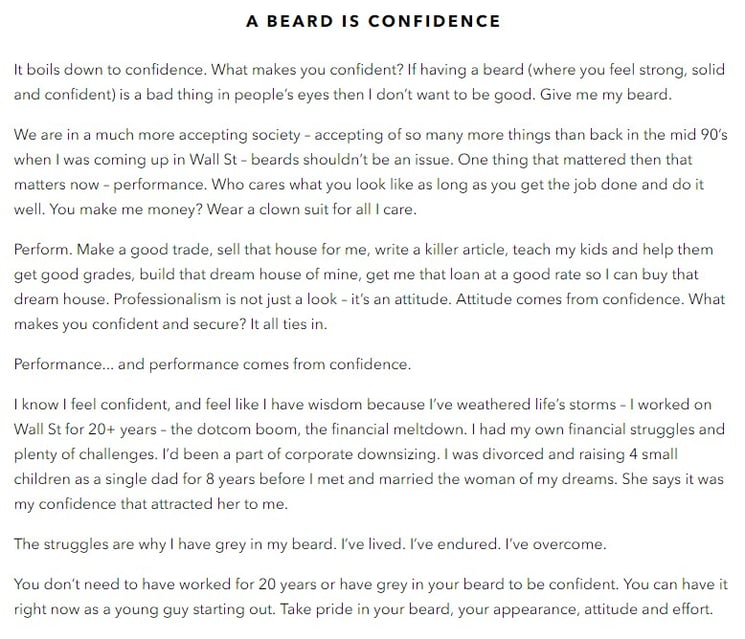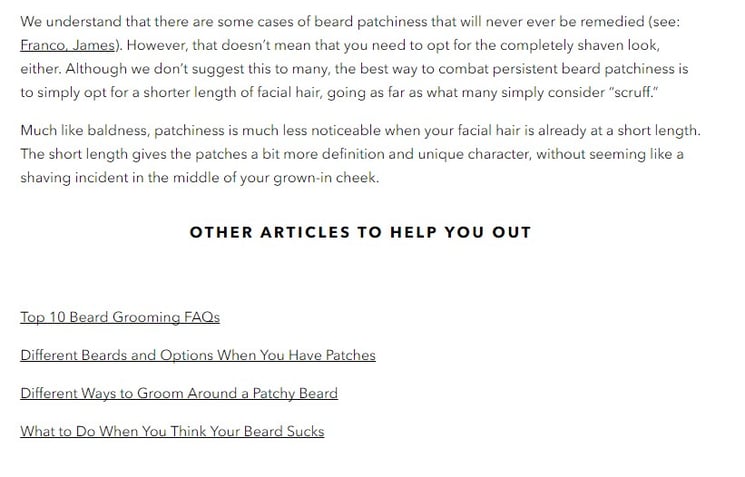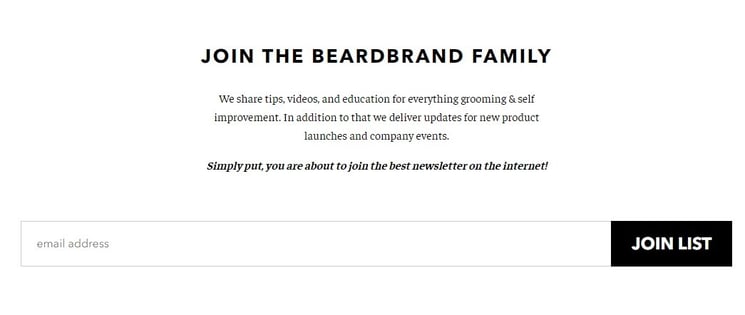In the previous post in this series about storytelling in content marketing, we discussed how conflict drives a narrative and makes a reader care about your content. But, what happens after the conflict reaches a climax?
There must be a resolution. A resolution provides the solution to the conflict in a story. In today’s post, we’ll show you how to put an ending on your content marketing materials, so you don’t leave your readers hanging.
3 Steps for Putting the Finishing Touches on Great Content
There are 3 things you need in order to wrap up your content effectively: context, easy access to more information and a call-to-action.
Step 1: Provide Context to Help the Reader Process the Story
What happens when we leave readers without a resolution?
Let’s look at a classic story as an example.

Cinderella. She’s treated really poorly by her stepmom and ugly stepsisters. There’s a fancy ball that everyone in the kingdom is invited to. She manages to get there with the help of her fairy godmother. She captures the heart of the prince. She loses her glass slipper as the magic is lifted, and she is forced to go back to her normal life. The prince scours the countryside looking for his one true love. The end.
Doesn’t sound right, does it?
The lesson of the story is completely different if we leave Cinderella at the point where the prince is still searching. The story isn’t about justice and a new, happy life for Cinderella if she never escapes the clutches of her cruel family. Instead, it becomes an unanswered question.
Will the prince ever find Cinderella? Will Cinderella escape the horrible conditions that have been forced upon her? Will love win?
While cliff hangers are a tried-and-true tactic of dramatic television series, it’s generally deeply unsatisfying to end stories that way.
When we leave readers without a resolution, it’s confusing and jarring. This is because the resolution is where the audience processes all of the emotions and themes of a story. They’re looking for context. They’re asking how the story relates to them and how the lesson helps them improve their own lives. The resolution is where the reader is shown the moral of the story.
A story without a resolution is like a joke without a punch line.
Likewise, in content marketing, when you write a blog post, you need to provide a solution to your audience’s problem and context to help them process the information. You don’t want to present the problem to the reader and then leave them hanging with no answers.
Let’s look at an example of a modern-day blog post that provides the kind of context I’m referring to.
This post, published on Beardbrand’s Urban Beardsman blog, is about how to gain confidence for growing a beard at work. The author starts with his own personal story about facing pressure to conform – to be clean shaven to get a Wall Street job.

In the middle of the post, the author transitions from his personal story to asking the reader to think about their own beard vs. society struggles – a move that further pulls the reader in and engages them.

The context – the point of the whole story – comes in the final section called “A Beard Is Confidence.” This is where the author wraps up his personal story and provides the audience with the key take-away.

There’s no confusion about the message the author wants to convey here. “Take pride in your beard, your appearance, attitude and effort.” That final line is also a clear call-to-action. Conveniently, Beardbrand sells beard grooming products that can help the reader take care of the beard they should be so proud of.
From this example, we can see just how important it is to have a resolution. Without one, this story would simply be a rant about the conflict bearded men sometimes have with society and the actionable take-away would be missing. But, instead, the author wraps things up very effectively with a clarion call to men to be their authentic selves with confidence.
Step 2: Give Your Audience Somewhere to Go For More
Once the reader has an “aha moment” from reading your great story, what should they do? Would the next logical step be to talk to someone or buy your product from your online store? Even though they’re inspired by your content, they might not be ready to become your customer just yet.
They may need more information. Perhaps they need tools, such as a checklist or a case study, to help them take their next step.
Every part of the content in your marketing campaign should provide your audience with places to find more information from your brand.
Again, Beardbrand’s blog provides us with another great example. At the end of a post about five realities of patchy beards, they provide a simple list of additional resources that would be interesting or useful to someone who has just finished reading the post.
 Easy, right? All you have to do is provide links to more great content on your site. It’s also an easy step to overlook when you think your content has made your point and you assume your audience must be convinced and ready to take action. They might be ready to buy your product or contact someone about your services, but they might also still be in the consideration stage of the buyer’s journey.
Easy, right? All you have to do is provide links to more great content on your site. It’s also an easy step to overlook when you think your content has made your point and you assume your audience must be convinced and ready to take action. They might be ready to buy your product or contact someone about your services, but they might also still be in the consideration stage of the buyer’s journey.
In the resolution of your marketing content, whether it’s a blog post, landing page, podcast or video, it’s important to guide your audience to additional materials or ways to find out more about your brand to ensure you don’t lose people who aren’t quite ready to buy yet.
Step 3: Call the Audience to Action
The best stories move us to action – which is why it’s vital to your content marketing campaigns to end all content with some form of a call-to-action.
A call-to-action (CTA) can take many forms. The format really depends on what your goal is and what you’re offering the person in return for taking the action.
Many men have likely been moved enough to buy products from Beardbrand by the final call-to-action in the how to gain confidence for growing a beard at work story. This is an indirect call-to-action that works well for businesses selling consumer products. They could have put links to suggested products near the end of the post, but they don’t need to because the products are easy to find from the website’s top navigation bar. The more subtle route, in this case, works very effectively.
When the goal is lead generation, you can’t afford to be that subtle. You’ll need to offer something of value in return for an e-mail address and other personal information, such as name, title, company information and more. Beardbrand uses this type of call-to-action, as well. It’s not about choosing the one call-to-action that you think will work, it’s about using multiple paths to reach and convert visitors to your site into loyal customers.
At the end of every Urban Beardsman blog post and every page of the Beardbrand website, they have a simple, yet effective, call-to-action. They ask the reader to join the Beardbrand family. Become part of our tribe, they say. The reader will receive the brand’s newsletter with valuable content, and the brand gets the reader’s e-mail address, giving them more opportunities to reach their audience.
 The more value you provide with your content offer, the more you can ask from your prospects. Asking for an e-mail address is a natural fit when you’re offering a newsletter. If, however, your content offer provides even greater value, possibly in the form of a downloadable ebook or a white paper that contains current research and statistics, it’s more likely that you’ll be able to ask prospects for additional information, such as their name and company name.
The more value you provide with your content offer, the more you can ask from your prospects. Asking for an e-mail address is a natural fit when you’re offering a newsletter. If, however, your content offer provides even greater value, possibly in the form of a downloadable ebook or a white paper that contains current research and statistics, it’s more likely that you’ll be able to ask prospects for additional information, such as their name and company name.
Wrapping Up Marketing Stories in a Neat Little Package
With context, access to more materials from your brand and a clear call-to-action, your content marketing stories will be wrapped up in a neat little package that’s easy for your audience to consume and engage with.
If you’re thinking it’s time to develop a content marketing campaign for your business that uses the power of marketing through storytelling, but you don’t have any expert writers on staff, it might be time to consider working with a content development agency. Download our free ebook for insights on the questions to ask in order to find the right content creation partner for your needs.
Other posts in this series:
Digital Marketer’s Guide to Unforgettable Content Marketing Campaigns
Use the Right Characters to Jump-Start Your Content Development
The Best Content Writers Use This Secret Weapon to Engage Audiences






